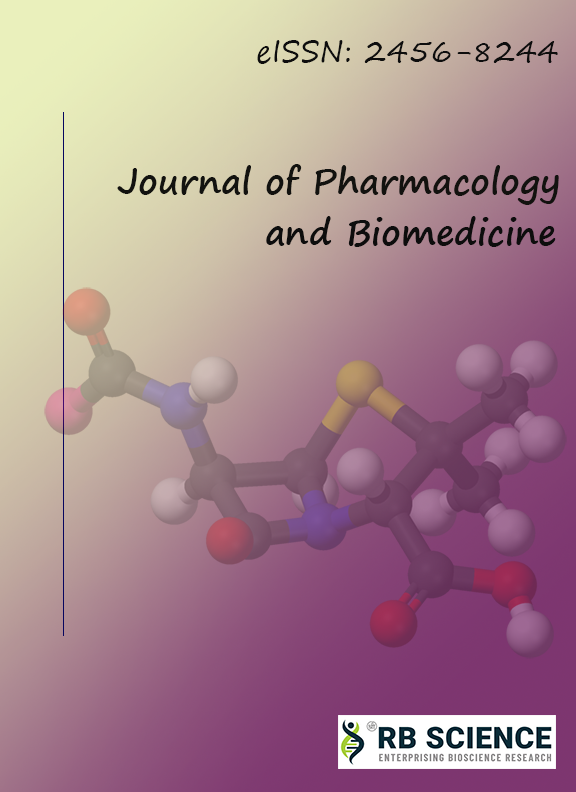Etodolac transdermal patches formulated with PEG-400 as plasticizer and polymers HPMC and ethyl cellulose by solvent cast- ing method are quite stable, there is no interaction between drug and formulation component on the basis of physical appearance and FTIR data. The average weight of the patches (2.54 cm2) was found to be ranging from 158 to 165 mg. The thickness of the patches ranged from 0.245 to 0.346 mm and was found to be de- pendent on the polymer ratio. The patches were able to withstand 43 to 78 folds at same place in the folding endurance test. All the formulations were able to incorporated uniform quantity of drug in them ranging from 98.5 to 99.2 %. The results of moisture content study revealed that increase in concentration of HPMC was direct- ly proportional to the moisture content in the patches with F6 ex- hibiting the highest moisture (7.25%) while F1 exhibiting the low- est (5.11%). The drug was released ranging from 88.3 to 60.7 % in various formulations. The regression coefficients of the graphical representation of the mathematical models reveal that the release of etodolac from the patches can be described by Korsemeyer- Peppas model. The expression relates that the drug released from the patches is due to diffusion of drug from the polymeric matrix of the patch and is primarily diffusion controlled.

NAMES:
ONLINE ISSN:2456-8244
Keywords: Etodolac Transdermal patch Sustained Release HPMC Ethyl Cellulose
DOI:
1. Iman IS, Nadia AS, Ebtsam MA. Formulation and stability study of chlorpheniramine maleate transdermal patch. Asian Journal of Pharmaceutics. 2010;70(4):455-460
2. Shah SS, Joshi R, Prabhakar P. Formulation and evaluation of transdermal patches of papaverine hydrochloride. Asian Journal of Pharmaceutics. 2010;4(1):79:86
3. Ren C et-al. Design and in vivo evaluation of an indapamide transdermal patch. International Journal of Pharmaceutics. 2009;370: 129-135
4. https://go.drugbank.com/drugs/DB00749; assessed on 12/12/2022
5. Salah S, Mahmoud AA, Kamel AO. Etodolac transdermal cubosomes for the treatment of rheumatoid arthritis: ex vivo permeation and in vivo pharmacokinetic studies. Drug Delivery. 2017; 24(1): 846-856
6. Fayez SM, Gad S, Khafagy E-SA, Abdel Jaleel GA, GHORAB MM, El-Nahhas SA. Formulation and Evaluation of Etodolac Lecithin Organogel Transdermal Delivery Systems. International Journal of Pharmacy and Pharmaceutical Sciences. 2015; 7(4): 325-334
7. Asthana GS, Asthana A, Singh D, Sharma PK. Etodolac Containing Topical Niosomal Gel: Formulation Development and Evaluation. Journal of Drug Delivery. 2016; 9324567. Doi: 10.1155/2016/9324567
8. Das S, Ramesh K, Vijay Kumar G. Formulation Development and In Vitro Evaluation of Transdermal Patches of Etodolac. International Journal of Research Publication and Reviews. 2020; 1(5): 116-124
9. Gondkar SB, Patil NR, Saudagar RB. Formulation development and characterization of etodolac loaded transethosomes for transdermal delivery. Research Journal of Pharmacy and Technology. 2017; 10(9): 3049-3056
10. Chaurasia G. A review of pharmaceutical preformulation studies in formulation and development of new drug molecules. Int J Pharm Sci Res. 2016; 7(6): 2313-2320
11. Hanson KB, Hoff DJ, Lahren TJ, Mount DR, Squillace AJ, Burkhard LP. Estimating n-octanol-water partition coefficients for neutral highly hydrophobic chemicals using measured n-butanol-water partition coefficients. Chemosphere. 2019; 218: 616-623.
12. Insuyu PD, Atila A, Kadioglu Y, Turan A. Quantitative determination of etodolac by uv spectrophtometric method in bulk drug and commercial formulations. International Journal of Pharmaceutical Sciences and Research. 2013; 4(8): 2927-2932.
13. Mamatha T, Venkateswara Rao J, Mukkanti K, Ramesh G. Development of matrix type transdermal patches of lercanidipine hydrochloride: physicochemical and in-vitro characterization. DARU 2010; 18(1): 9-16
14. Mutalic S, Udupa N. Glibenclamide transdermal patches: physicochemical, pharmacodynamic, and pharmacokinetic evaluations. Journal of Pharmaceutical Sciences 2004; 93: 1577-1594.